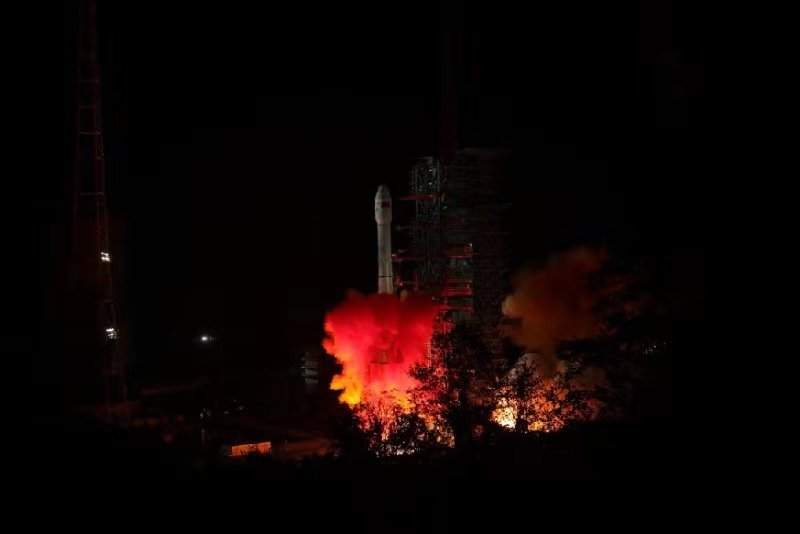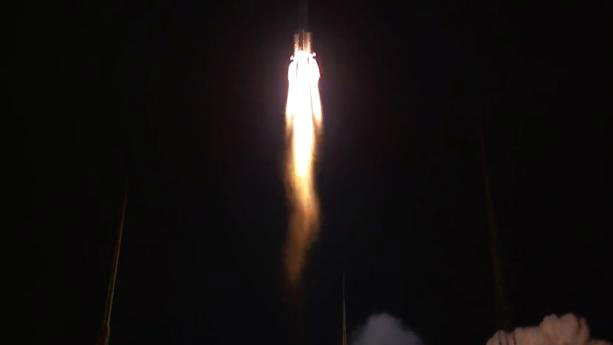
China's Chang'e-4 lunar probe was successfully launched by the Long March 3B carrier rocket from the Xichang Satellite Launch Center on Saturday, starting a mission to make humanity’s first soft landing on the far side of the Moon. China’s lunar exploration project will once again usher in a key moment.
China's Chang'e-4 will make first soft landing on the far side of the Moon in human history
The Chang'e-4's lunar lander and rover are equipped with eight instruments, cameras and payloads for a range of scientific studies, including low-frequency radio observations, detection of solar wind activity and interaction with matter on the Moon’s surface, as well as explorations of surface features and subsurface structures. In addition, the Chang'e-4's lunar rover is equipped with a panoramic camera, ground-penetrating radar and a built-in infrared imaging spectrometer, enabling scientists to obtain data on the far side of the Moon.

Since the Moon’s rotation and revolution cycle is the same, it always keeps nearly the same face turned towards the Earth. It is impossible to communicate directly with the far side of the Moon from the Earth. To solve this problem, China has already sent a relay satellite called Queqiao to assist Chang'e-4 to the halo orbit of the Earth-Moon Lagrange Point L2 in late May.
The Earth-Moon Lagrange Point L2 is the gravitational balance point between the Earth and the Moon. Around this point, the satellite can sustain itself in orbit for a long time with very little fuel. The Queqiao is the world’s first communications satellite to operate at this point. Some 95 percent of the time, the Queqiao will be perfect as a relay station for data transmission because it faces the far side of the Moon and the Earth at the same time.

Although it is difficult to conduct experiments on the far side of the Moon, the benefits are also quite obvious. When conducting radio astronomical observations in the Earth’s orbit above the atmosphere, or even on the near side of the Moon, the observations face interference by the Earth’s ionosphere, lightning, aurora and artificial radio signals. However, these disturbances from the Earth can be avoided by establishing a radio astronomy observatory on the far side of the Moon.

The Von Karman Crater, named after a Hungarian-American mathematician, aerospace engineer and physicist, in the Aitken Basin of the south pole region of the Moon, was chosen as the soft landing site for Chang'e-4. The region is believed to have great scientific research potential.
Since no human spacecraft has landed on the far side of the Moon, human’s knowledge about it mainly comes from photographs and it is very limited. Chang'e-4 will take a crucial step for human beings to gradually unveil the mystery of the far side of the Moon.

Related information:
In 2004, China officially launched a Moon exploration project called Chang'e Project. The Chinese Lunar Exploration Program (CLEP) is divided into three main operational phases of orbiting (Phase I), landing (Phase II) and returning (Phase III).
The Chang'e-1 mission was launched on October 24, 2007 as a pioneer of CLEP, aiming at the scientific objectives of obtaining three-dimensional images of the landforms and geological structures of the lunar surface, analyzing and mapping the abundance and distribution of various chemical elements on the lunar surface, probing the features of the lunar soil and assessing its depth, and probing the cislunar space environment. The spacecraft intentionally impacted the lunar surface in Mare Foecunditatis area under the instruction sent from the ground after finishing its nominal and extended scientific missions on March 1st, 2009.
The Chang'e-2 was part of the first phase of the Chinese Lunar Exploration Program, and conducted research from a 100-kilometer-high lunar orbit in preparation for the Chang'e-3 lander and rover. The Chang'e-2 was similar in design to the Chang'e-1 but with some technical improvements, including a more advanced onboard camera. It was launched on October 1, 2010, aiming at similar scientific objectives as the Chang'e-1, i.e. obtaining more precise three-dimensional images of the lunar surface, analyzing and mapping the abundance and distribution of various chemical elements on the lunar surface, probing the features of the lunar soil, and probing the cislunar space environment.
Upon accomplishing the original goals and scientific exploration in June 2011, the Chang'e-2 left lunar orbit for the LagrangeL2 point of the Sun–Earth system, to test the Chinese tracking and control network. On 15 April 2012, Chang'e-2 departed from L2 and began a mission to the asteroid 4179 Toutatis, and a flyby was successfully achieved on 13 December 2012. As of 2016, the Chang'e-2 has reached a distance of over 200 million kilometers from Earth.
The Chang'e-3 is an unmanned lunar exploration mission incorporating a robotic lander and China's first lunar rover. It was launched on December 2, 2013 as part of the second phase of the Chinese Lunar Exploration Program. On 14 December 2013, The Chang'e-3 landed on the lunar surface near Sinus Iridum, becoming the first spacecraft to soft-land on the Moon since the Soviet Union's Luna 24 in 1976. The scientific objectives of the Chang'e-3 include lunar surface topography and geology survey, lunar surface material composition and resource survey, Sun-Earth-Moon space environment detection, and lunar-based astronomical observation.
(Compiled by Zhang Jian)


